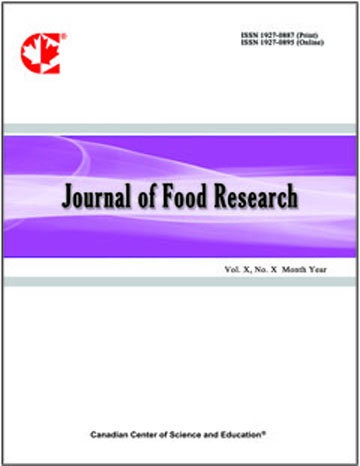Improving the Physicochemical and Sensory Characteristics of Plantain “Konkondé” towards Adding Value to Traditional Products
- N’Guessan Clementine Alexandra Assahore
- Kouadio Claver Degbeu
- Yapi Elisee Kouakoua
- Adam Camille Kouame
- Yao Denis N’Dri
Abstract
These samples of “konkondé” were subjected to textural, calorimetric, sensory and biochemical analysis. The results obtained from theImproving the brittle texture and dark colour of plantain “konkondé” is a lever for meeting consumer demands and promoting this met. The aim is therefore to help add value to plantain “konkondé” by improving its texture and clarity. To this end, cassava flour was used as a binding and clarifying agent for plantain “konkondé” at proportions of 0% (FB), 30% (FBM30) and 50% (FBM50), respectively. The “konkondé” was prepared by cooking with water under kneading until the paste was obtained. statistical analyses showed an increase in elasticity (elasticity FB = 7.59 ± 1.02 mm; elasticity FBM30 = 9.95 ± 0.12 mm and elasticity FBM50 = 11.71 ± 0.06 mm) and clarity (L*FB = 40.7±0.38; L* FBM30 = 51.23±0.66; L* FBM50 = 57.4±0.66) in proportion to the addition of cassava flour. Of these three samples, the “konkondé” FBM30 was the most accepted by panellists with a rating of 7 on a scale of 9. This “konkondé” contains 0.81±0.11% protein; 0.12±0.02% lipid; 0.11±0.01% fibre; 0.69±0.09% ash; 23.19±2.00% carbohydrate and has an energy value of 97.08±2.88%. Its potassium, phosphorus, magnesium, calcium and iron concentrations are 281.99 ± 2.26 mg/100g; 85.51 ± 1.24 mg/100g; 22.90 ± 0.88 mg/100g; 41.42 ± 0.48 mg/100g and 1.77 ± 0.03 mg/100g, respectively. Incorporation of cassava flour improves the texture and colour of plantain “konkondé”
- Full Text:
 PDF
PDF
- DOI:10.5539/jfr.v15n1p16
Index
- AGRICOLA
- BASE (Bielefeld Academic Search Engine)
- CAB Abstracts
- CAB Direct(CABI)
- CAS (American Chemical Society)
- CNKI Scholar
- Electronic Journals Library
- EuroPub Database
- Excellence in Research for Australia (ERA)
- Google Scholar
- JournalTOCs
- Mendeley
- Mir@bel
- Open policy finder
- Scilit
- Ulrich's
- WorldCat
Contact
- Bella DongEditorial Assistant
- jfr@ccsenet.org
